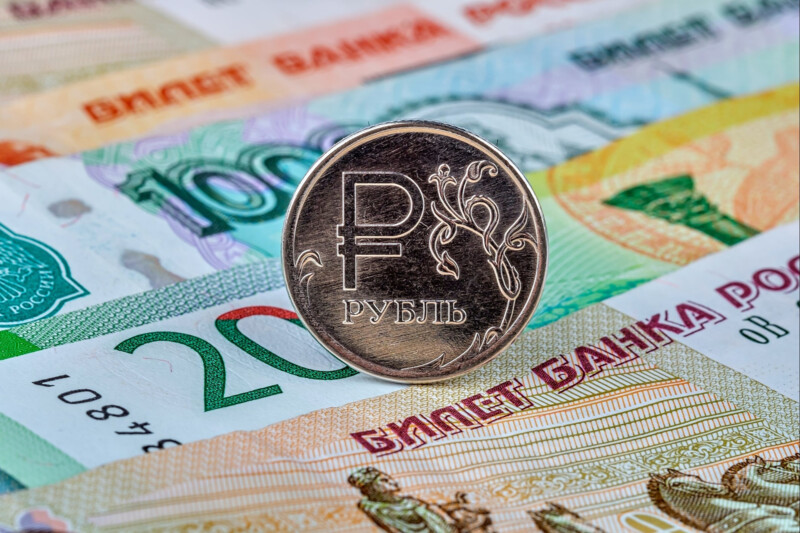Malgré l’invasion de l’Ukraine et les sanctions internationales qui en ont découlé, la Russie est parvenue à redresser le rouble, revenu à son niveau d’avant-guerre. Les exportations de gaz et de pétrole ont largement contribué à la stabilisation des marchés financiers.
Des mesures exceptionnelles pour redresser le rouble
Après une chute brutale suite aux sanctions économiques de l’Europe, des États-Unis et de leurs alliés, le rouble a retrouvé son niveau d’avant la guerre en Ukraine. Désormais, il faut 84 roubles pour obtenir un dollar, contre plus de 140 début mars.
Plusieurs mesures exceptionnelles ont été prises par la Russie pour redresser le rouble, à commencer par la fourniture de liquidité par la banque centrale russe. Les exportations de gaz et de pétrole ont permis à la Banque de Russie de s’assurer un flux de devises étrangères, en contraignant les pays européens importateurs à échanger leurs euros contre des roubles, auprès d’établissements bancaires comme Gazprombank.
Par ailleurs, l’interdiction faite aux banques par le Trésor américain d’accepter les paiements russes en dollars empêche le règlement d’une dette de 649,2 millions de dollars, amenant le ministère des Finances russe à annoncer qu’il paierait en roubles les détenteurs de ses obligations libellées en dollars.
Le rôle crucial des exportations de gaz et de pétrole
Selon Elvira Nabiullina, la gouverneure de la Banque de Russie, la chute du PIB est inévitable, mais l’économie du pays devrait revenir à une dynamique de croissance.
La hausse des prix du gaz, ainsi que le niveau toujours élevé des exportations d’énergie associé au recul des importations russes, a permis au surplus de la balance des transactions courantes d’atteindre au 1er trimestre 2022 le montant record de 58 milliards de dollars. Ce montant pourrait s’élever à 200 voire 250 milliards de dollars sur l’année.
D’après la gouverneure de la banque centrale russe, le gel des avoirs imposé par les États-Unis, l’Europe et leurs alliés n’a pas empêché la Russie de disposer toujours suffisamment d’actifs de diversification. En tout début d’année, 21,5 % de ses actifs étaient investis sur l’or, et 17,1 % sur la dette chinoise. En 8 ans, les investissements de la Russie sur l’or ont été multipliés par deux.
Début 2022, 33,9 % des actifs de la Banque de Russie étaient investis sur l’euro, et seulement 10,9 % sur le dollar, soit 2 fois moins que l’année dernière. 15,7 % de sa dette européenne est gelée en Allemagne. Désormais, la répartition des actifs par devise ne sera plus dévoilée par la banque centrale russe, qui se contentera de communiquer le montant de ses réserves de façon hebdomadaire et mensuelle.
